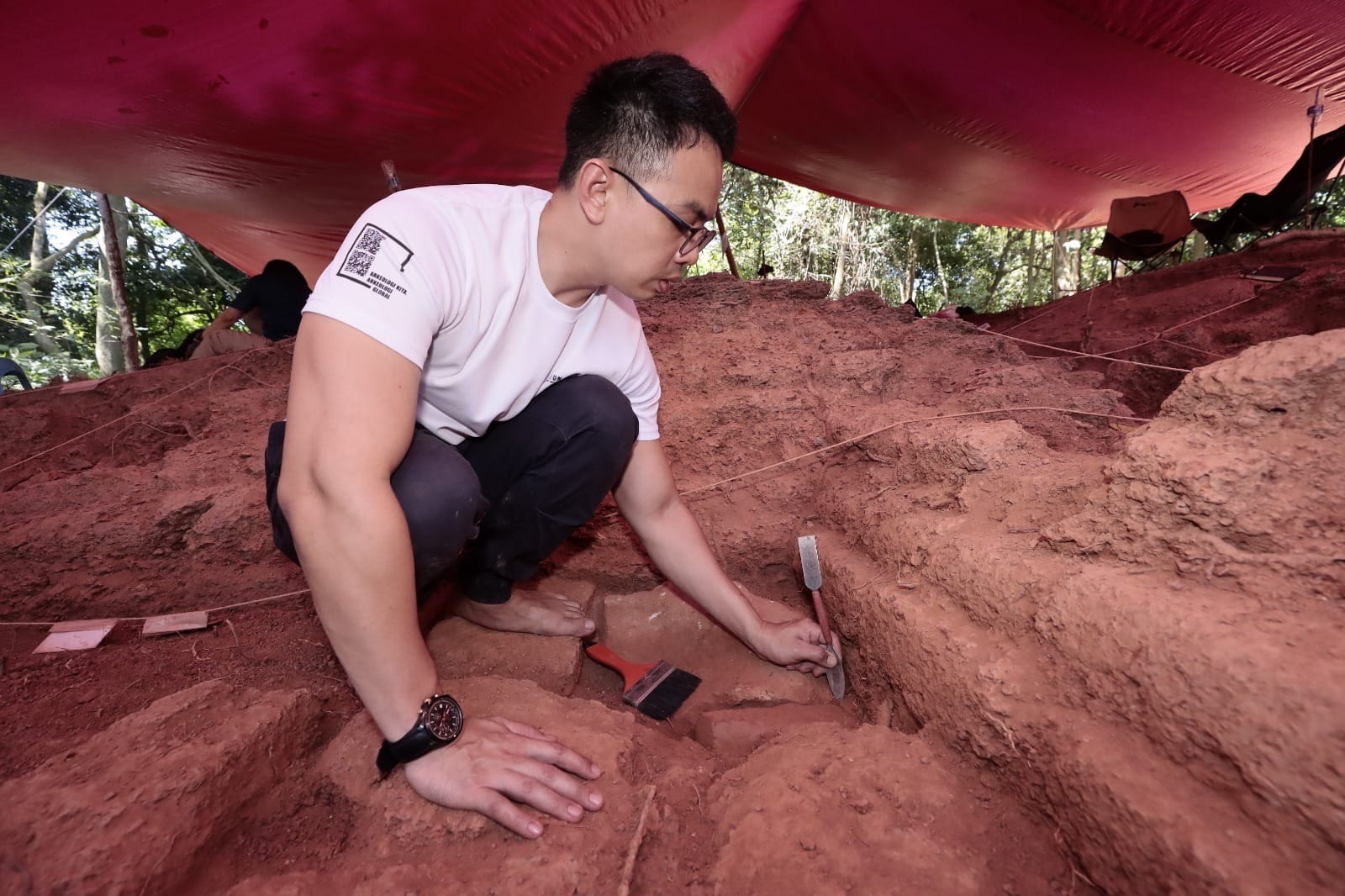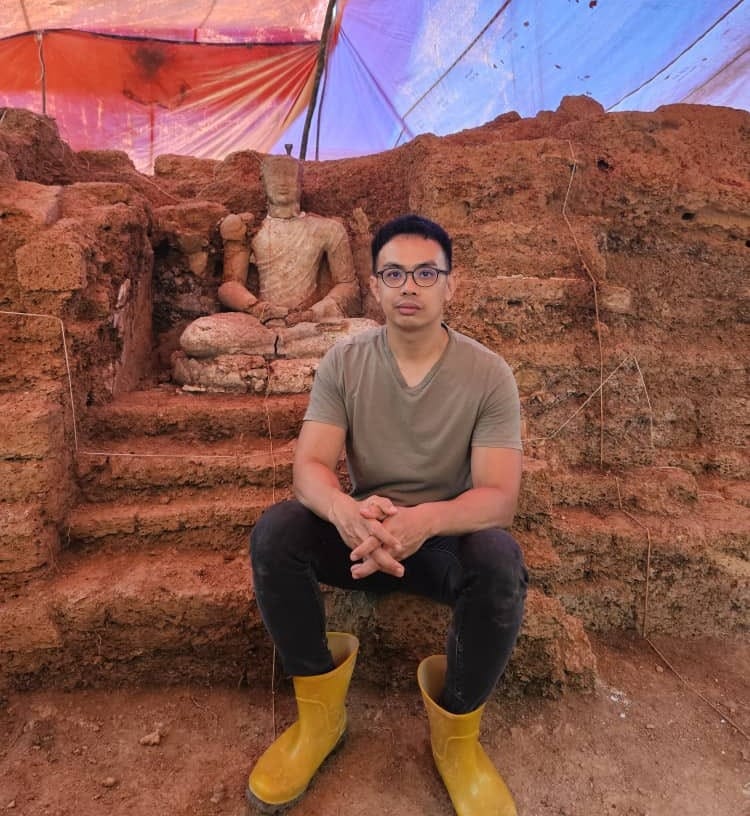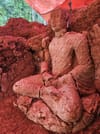Associate professor Dr Nasha Rodziadi Khaw shares his thoughts on the rediscovering of the Malay Peninsula’s heritage
- Lembah Bujang as a cradle of early Southeast Asian maritime civilisation
- Cutting-edge archaeological methods unlocking long-lost history
- Need for sustainable conservation and international collaborations
By Sebastian Lim
TUCKED way in the verdant foothills and river valleys of Kedah, Lembah Bujang — literally “Bujang Valley” — has long whispered the secrets of a thriving ancient civilisation. For Dr Nasha Rodziadi Khaw, a leading Malaysian archaeologist and associate professor at Universiti Sains Malaysia, these whispers became a calling. Over the past decade, his research has helped place Lembah Bujang back on the regional map — not just as an archaeological curiosity, but as a linchpin in the story of early Southeast Asian civilisation.
In this Part 1 of the exclusive interview, Dr Nasha shares his views on the discoveries made at Lembah Bujang.
> MARITIME CROSSROADS OF THE PAST
Why is Lembah Bujang considered a historically significant archaeological site in Southeast Asia?
Lembah Bujang is arguably among the oldest known entrepôts in Southeast Asia, dating back over a millennium. Its continuous occupation and diverse cultural layers show that the region was deeply connected to India subcontinent, China, and the Middle East, making it central to understanding maritime trade and early cosmopolitanism in the region.
What initially drew you to research Lembah Bujang?
I’ve always been fascinated by early interregional trade networks and how they shaped ancient societies. Lembah Bujang stood out because of its strategic location and archaeological richness. My interest deepened when I realised how little the site was understood in the broader narrative of early Southeast Asian history.
How does Lembah Bujang challenge or enhance our understanding of early civilisations in the Malay Peninsula?
The site reveals a complex, urbanised, and highly adaptive society capable of negotiating multiple cultural influences. It also suggests a level of political autonomy in coastal outposts far earlier than previously thought.

> DISCOVERIES AND INTERPRETATION
Could you share details about the most significent discovery you or your team have made?
At Bukit Choras, we uncovered a stupa on an elevated hill with clear Buddhist iconography. This suggests a high degree of religious sophistication and regional connectivity with South Asia. We’ve also continued research in the ancient iron smelting areas in Sungai Batu complex pointing to an advanced local economy.
How did you feel upon discovering something new and historic at the site?
It’s difficult to describe, it’s a mix of awe, humility, and a renewed sense of purpose. There’s a responsibility that comes with unearthing a piece of forgotten history, especially one that reshapes national narratives.
Has the site revealed any surprising cultural or religious influences beyond Hindu-Buddhist traces?
Yes. While Hindu-Buddhist elements dominate, we also see material culture that hints at indigenous technology such as pottery making.
Any interesting artifacts found at the site that you can share?
We’ve uncovered Sanskrit inscriptions, stucco statues, iron objects and votive tablets. These artifacts highlight Lembah Bujang’s role as a vibrant nexus of cultural exchange.

> BREAKTHROUGH DISCOVERIES AND HIGH-TECH METHODS
What modern archaeological techniques have been employed in your excavations?
We use a combination of stratigraphic excavation, OSL dating, Geochemistry analysis, and GIS mapping. These methods help us reconstruct ancient land use patterns and site chronology with greater precision.
How have technologies like LiDAR, GPR, or 3D scanning contributed to your understanding?
They’ve been game-changers. LiDAR will help us detect hidden mounds beneath forest cover, while GPR has revealed substructures without invasive digging. 3D scanning allows us to digitally preserve fragile structures and create reconstructions for education and tourism.
> FUTURE RESEARCH
What gaps still exist in our understanding of Lembah Bujang?
Chronological gaps and regional integration remain areas of interest. We still lack a full understanding of how Bujang Valley interacted with other adjacent inland and coastal polities and how it was governed politically.
Are there areas nearby that may contain undiscovered parts of the ancient settlement?
Yes, including the foothills of Gunung Jerai, areas near Sungai Merbok, and sites like Sungai Batu. We believe the ancient settlement was more expansive than the current mapped zone.
How do you see the narrative of Lembah Bujang evolving in the next decade?
I see it becoming central to Malaysia’s national history, a symbol of ancient multiculturalism, trade diplomacy, and resilience. With government backing and public interest growing, the narrative will become richer and more inclusive.





